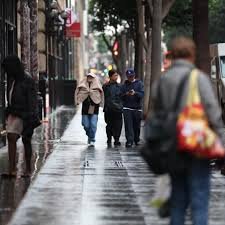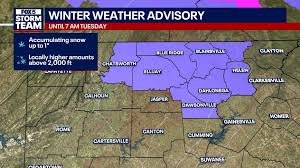
How to Stay Safe: Understanding and Responding to a Flash Flood Warning
A flash flood warning can turn a calm day into a terrifying ordeal in minutes. Unlike slower-developing floods, flash floods strike with incredible speed and destructive force, leaving little time to react. Understanding these urgent alerts and knowing exactly what steps to take is crucial for protecting yourself, your family, and your property.
In this comprehensive guide, we’ll dive into what a flash flood warning truly signifies, how to prepare well in advance, and what immediate actions are necessary when the waters rise rapidly. Your safety is paramount – let’s get ready.
Understanding the Urgency of a Flash Flood Warning
What exactly triggers a flash flood warning? These warnings are issued when a flash flood is imminent or occurring. A flash flood is a rapid flooding of low-lying areas: washes, rivers, dry lakes, and urban areas. They can be caused by:
- Intense rainfall from thunderstorms or tropical storms.
- Dam or levee failures.
- Rapid snowmelt.
The danger lies in their speed. Water levels can rise several feet in just a few minutes, creating dangerous currents and submerging roads, homes, and infrastructure. It’s not just about rising water; it’s about the force and debris carried within it.
Before the Warning: Proactive Flood Preparedness
The best defense against a flash flood is preparedness. Don’t wait for a warning to start getting ready. Here’s how to build your resilience:
- Build an Emergency Kit: Assemble a disaster kit with at least three days’ supply of water, non-perishable food, a first-aid kit, flashlight, extra batteries, a whistle, a multi-purpose tool, hygiene items, copies of important documents, and any necessary medications.
- Develop a Family Communication Plan: Ensure everyone knows how to contact each other if separated. Designate an out-of-state contact person for family members to check in with.
- Know Your Risk: Determine if your home is in a flood-prone area. If you live near a river, stream, or in a low-lying zone, you’re at higher risk.
- Home Protection: Elevate valuable items, appliances, and electrical panels if your home is susceptible to flooding. Consider sandbags or flood barriers if you have time before a predicted event.
- Stay Informed: Have multiple ways to receive emergency alerts, such as NOAA Weather Radio, local news, and smartphone alerts.
During a Flash Flood Warning: Immediate Actions Are Key
Once a flash flood warning is issued for your area, immediate action is critical. Time is is of the essence.
Stay Informed and Alert
- Tune In: Continuously monitor local news, radio, or weather apps for updates and instructions from emergency services.
- Heed Evacuation Orders: If authorities advise evacuation, do so immediately. Follow designated evacuation routes. Do not wait for conditions to worsen.
Safety First: Protect Yourself and Others
- Move to Higher Ground: If you are in a low-lying area, move quickly to higher ground. Do not walk, swim, or drive through floodwaters.
- “Turn Around, Don’t Drown”: This is a critical safety message. Never attempt to drive or walk through flooded roads. Just 6 inches of moving water can knock an adult off their feet, and 12 inches can sweep away most cars. Even if the water looks shallow, it could hide dangerous debris or washed-out road sections.
- Avoid Bridges and Underpasses: These areas can quickly become traps for fast-moving water.
- If Trapped in a Vehicle: If your car stalls in floodwaters, abandon it immediately and seek higher ground. If you cannot get out, stay on top of your vehicle.
- Disconnect Utilities: If it’s safe to do so, turn off electricity and gas to your home if you anticipate flooding.
After the Flood: Recovery and Ongoing Safety
The danger doesn’t always end when the waters recede. Recovery from a flash flood requires continued caution.
- Return Home Safely: Only return home when authorities declare it safe. Roads may still be damaged or unstable.
- Inspect Your Home: Check for structural damage before entering. Be wary of damaged electrical wiring, gas leaks, and hidden hazards.
- Avoid Floodwaters: Even after the initial surge, standing floodwaters can be contaminated with sewage, chemicals, and disease-causing germs. They may also hide sharp objects or live electrical wires.
- Document Damage: Take photos or videos of all damage for insurance purposes.
- Seek Professional Help: If your home has significant damage, especially electrical or structural, consult qualified professionals before attempting repairs.
Conclusion: Your Role in Flash Flood Safety
A flash flood warning is a serious call to action. While we cannot control the weather, we can control our readiness and response. By understanding the risks, preparing an emergency kit, having a communication plan, and acting decisively when warnings are issued, you significantly increase your chances of staying safe.
Stay informed, stay prepared, and remember: your life is worth more than any possession. FEMA provides additional resources for flood preparedness and recovery.




